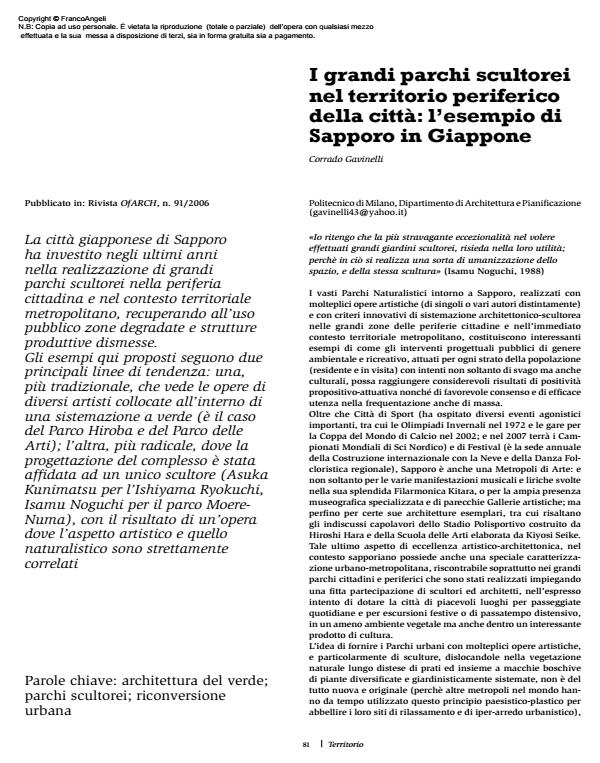Large sculpture parks on the outskirts of cities: the example of Sapporo in Japan
Journal title TERRITORIO
Author/s Corrado Gavinelli
Publishing Year 2011 Issue 2010/55
Language Italian Pages 8 P. 81-88 File size 1086 KB
DOI 10.3280/TR2010-055013
DOI is like a bar code for intellectual property: to have more infomation
click here
Below, you can see the article first page
If you want to buy this article in PDF format, you can do it, following the instructions to buy download credits

FrancoAngeli is member of Publishers International Linking Association, Inc (PILA), a not-for-profit association which run the CrossRef service enabling links to and from online scholarly content.
The Japanese city of Sapporo has invested in recent years in the creation of large sculpture parks on the outskirts of the city and in the metropolitan area, thereby recovering run down areas and abandoned industrial sites for public use. The examples given here follow two main tendencies: one, more traditional, where works by different artists are sited inside green areas (the Hiroba Park and the Park of the Arts) and another, more radical, where the design of the whole park is performed by a single sculptor (Asuka Kunimatsu for Ishiyama Ryokuchi and Isamu Noguchi for the Moere-Numa Park), with the result that the art and nature aspects are closely correlated.
Keywords: Green architecture; sculpture parks; urban redevelopment
Corrado Gavinelli, I grandi parchi scultorei nel territorio periferico della città: l’esempio di Sapporo in Giappone in "TERRITORIO" 55/2010, pp 81-88, DOI: 10.3280/TR2010-055013